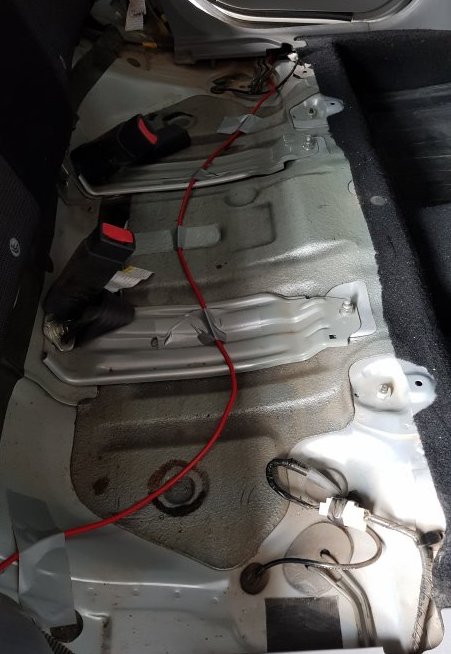
I had been having troubles with my current setup on and off for the last few years. I think the problem was likely caused by a pair of switch over isolation relays I was using. The wife was sick of the fridge beeping at us, and I wasn’t too fond of that either!
Graham had mentioned that the Lithium batteries were on special. So I decided to ditch the AGM we currently had and bit the bullet and purchased a 100AH LiFePO4 battery. I then needed to look into a new charger, and one that would run off solar and the car. I choose the Redarc BCDC1225. It has dedicated inputs for solar and the car alternator, with a maximum charge rate of 25A. It will default to using the solar input first before it uses the car input, and the car input will need to be above 14.8V, so it will not start drawing off the cranking battery.
The main down side was that this needs to be connected directly to the car battery, whereas my previous system just plugged into the 12v (probably 10A) accessory socket in the back of the vehicle.

I arranged the two inputs (vehicle and solar) on the top left of the board, and the outputs on the right hand side where they would be facing the back of the vehicle once mounted. The output is two 12V accessory sockets and three Anderson outputs. Redarc make a fuse kit specifically for this model, which was on the little pricey side of things, but I could not find a suitable alternative with a 40A fuse (the closest I could get was 50A), so I just brought them. They are the two black boxes just to the left of the charger.
My previous system was criticised for using too light a wire. So all the wiring on the input side is either 80A or 100A battery wire. My ground bus bar is 8 x 16mm aluminum bar. Lastly, the output is protected with a 25A manual reset circuit breaker.
Then it came time to install it.
Surprisingly, running the wire to the back of the car was relatively straight forward. A small cut through the firewall grommet – once I could fine a sharp Stanley knife blade. The cable dropped to the ground, so I didn’t have to go fishing for it under the dash. We then ran the cable along the door sill, under the back seat and into the back.

To support the charger I used an old shelf bracket. I had to do a bit of cutting with an angle grinder and some welding, but in the end I had a nice support bracket.
Cost $1271 (Lithium Battery $567, BDDC1225 $462, Fuse Kit $67, Wire and connectors 175)
Note: we have been running this setup for a few months now and we are very happy with it. My wife went on an couple of extended trips, one to the Simpson Desert and a second road trip to the Birdsville Big Red Bash and there was no issues with the fridge or charging the battery.
